Exponents
Exponents are a shorthand way of representing repeated multiplication of the same number. The exponent of a number says how many times to use that number in a multiplication. It is written as a small number to the right and above the base number.
Basic Terminology:
- Base: The number that is being multiplied in the expression. For example, in 23, 2 is the base.
- Exponent: The number that represents how many times the base is being multiplied. In the expression 23, 3 is the exponent.
- Power: The result of raising a base to an exponent. In 23, the power is 8.
Rules of Exponents:
- Product of Powers: When multiplying two powers with the same base, add the exponents. For example: 23 * 24 = 27.
- Quotient of Powers: When dividing two powers with the same base, subtract the exponents. For example: 25 / 22 = 23.
- Power of a Power: When raising a power to another power, multiply the exponents. For example: (23)2 = 26.
- Zero Exponent: Any non-zero number raised to the power of 0 is 1. For example: 50 = 1.
- Negative Exponent: A negative exponent indicates the reciprocal of the base raised to the positive exponent. For example: 2-3 = 1/(23).
Practice Problems:
- Calculate the value of 42.
- Simplify the expression 34 * 32.
- What is 50?
- Find the value of (23)2.
- Simplify the expression 62 / 64.
- Calculate the value of 7-2.
[Exponents] Related Worksheets and Study Guides:
.◂Math Worksheets and Study Guides Fifth Grade. Perimeter
Study Guide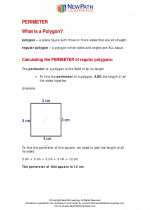 Perimeter
Perimeter  Activity Lesson
Activity Lesson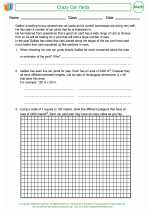 Crazy Car Yards
Crazy Car Yards  Worksheet/Answer key
Worksheet/Answer key Perimeter
Perimeter  Worksheet/Answer key
Worksheet/Answer key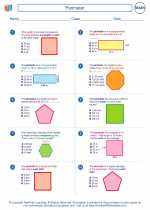 Perimeter
Perimeter  Worksheet/Answer key
Worksheet/Answer key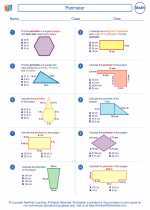 Perimeter
Perimeter  Worksheet/Answer key
Worksheet/Answer key Perimeter
Perimeter  Worksheet/Answer key
Worksheet/Answer key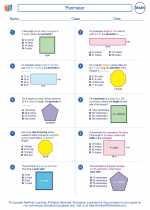 Perimeter
Perimeter  Worksheet/Answer key
Worksheet/Answer key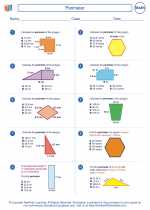 Perimeter
Perimeter  Worksheet/Answer key
Worksheet/Answer key Perimeter
Perimeter 

 Activity Lesson
Activity Lesson
 Worksheet/Answer key
Worksheet/Answer key
 Worksheet/Answer key
Worksheet/Answer key
 Worksheet/Answer key
Worksheet/Answer key
 Worksheet/Answer key
Worksheet/Answer key
 Worksheet/Answer key
Worksheet/Answer key
 Worksheet/Answer key
Worksheet/Answer key
 Worksheet/Answer key
Worksheet/Answer key

The resources above cover the following skills:
Geometry (NCTM)
Analyze characteristics and properties of two- and three-dimensional geometric shapes and develop mathematical arguments about geometric relationships.
Identify, compare, and analyze attributes of two- and three-dimensional shapes and develop vocabulary to describe the attributes.
Use visualization, spatial reasoning, and geometric modeling to solve problems.
Use geometric models to solve problems in other areas of mathematics, such as number and measurement.